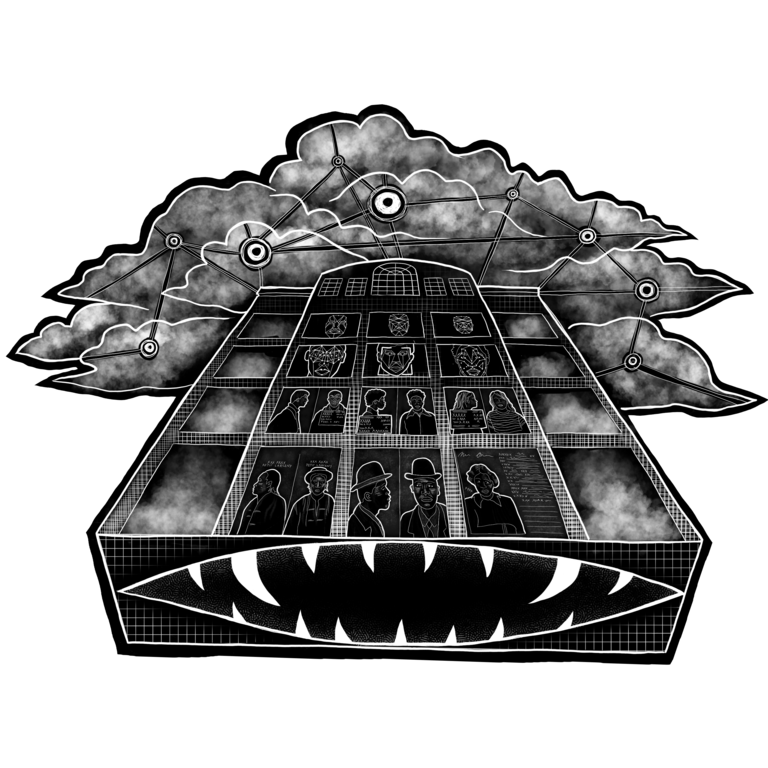IDENT/HART

IDENT, the Automated Biometric Identity System, is the central DHS biometric data registry for foreign nationals who have entered the US. Created in 1994, it stores fingerprints, and more recently, facial photographs and iris scans for biometric identification and cross-checking against other law enforcement datasets. It is expected to be replaced by the Homeland Advanced Recognition Technology system (HART), a multi-billion dollar upgrade that would exponentially expand the agency’s capacity to collect, share and analyze a scaled-up and expanded range of biometric data, to be stored on Amazon Web Services’ GovCloud. DHS initially planned to replace IDENT with HART in 2018 — but a US Government Accountability Office (GAO) report from June 2021 indicated that DHS postponed deployment of the first phase of HART until December 2021, due to mismanagement by HART’s main contractor, Northrop Grumman.Footnote 1 HART is now being developed by Peraton, a subsidiary of private equity firm, Veritas Capital, that acquired Northrop Grumman’s IT services in 2020.Footnote 2
(In this report, in order to make clear the evolution of this biometric system and reduce the number of acronyms, we refer to “IDENT/HART” when describing planned functionalities for the data system, and “IDENT” for current and previous versions of this data system.)
While IDENT began as a database that collected and processed biometrics from people accused of trying to enter the US without authorization, after 9/11 it began including biometric records from everyone who has had any contact with DHS. IDENT grandfathered into its database the fingerprint records for many naturalized US citizens who were fingerprinted before naturalizing, and noncitizens with current visas. Between 2001 and 2014, IDENT added new categories of people to a list of “national security interest:” visa applicants at US embassies and consulates; noncitizens traveling to and from the United States; noncitizens applying for immigration “benefits” (including asylum and refugee status); unauthorized migrants apprehended at the border or at sea; suspected immigration law violators encountered or arrested within the US; US citizens approved to participate in DHS's “trusted traveler” programs like Global Entry or TSA PreCheck; and people who adopted children from abroad. IDENT trolls all migrants who come to the US, requiring variously invasive forms of biometric data collection at every point along the border and port of entry, from all people entering or exiting the country, non-citizens and citizens alike.
CBP’s current surveillance system relies on compelled and often covert biometric identification and constant vetting against criminalizing databases during travel — using “a traveler’s face as the primary way of identifying the traveler to facilitate entry and exit from the United States” via CBP apps, kiosks for “trusted traveler” programs and security camera live feeds.Footnote 3 The goal, then-CBP Commissioner Kevin McAleenan declared in 2018, is to “confirm the identity of travelers at any point in their travel,” not just at entry to or exit from the United States.Footnote 4
Each time that an individual’s biometric identifier is uploaded to the IDENT/ HART database by an agent for ICE, CBP, Citizenship and Immigration Services (CIS), or the Department of State, IDENT/ HART would log the data transfer as an “encounter.”Footnote 5 In the circular feedback loop of data criminalization, each of these “encounters” (which really just indicate that a person may be a non-US born traveler or migrant) comes up as criminalizing material when in future searches by law enforcement that data automatically flags a person for ICE agents and LESC analysts who are searching for deportability. In this way, “encounters” that fail to prove administrative law-breaking nonetheless confer suspicion on a person, marking them and even their contacts for ongoing surveillance and repeated harassment. DHS law enforcement officer may set an alert in IDENT that will notify him or her if a particular individual is encountered again.Footnote 6
With the implementation of HART, DHS and other law enforcement agencies will be able to store and analyze more experimental modes of biometrics. HART will allow DHS to search multiple modes simultaneously (face recognition and fingerprints at the same time, for instance). According to comments submitted to DHS’ Privacy Office by the Electronic Freedom Frontier, “DHS also plans to vastly expand the types of records it collects and stores to include at least seven different biometric identifiers, such as face and voice data, DNA, and a blanket category for “other modalities.”Footnote 7 HART allows its users to “ascertain the identity (1) of multiple people; (2) at a distance; (3) in public space; (4) absent notice and consent; and (5) in a continuous and on-going manner.”Footnote 8
HART allows “latent fingerprints” (taken from surfaces, not just during booking) to be uploaded from non-immigration criminal punishment agencies. Latent prints can be archived for future searches.Footnote 9 Like many DHS databases, it allows a user to subscribe to notifications if someone’s profile in HART logs a new “encounter” with DHS, or if other information in their record changes.
HART will be able to link fingerprints, palm prints, iris scans, and photographs with biographic information to construct detailed and holistic portraits. Future iterations of HART are expected to store voice prints and DNA information. This trove of biometric data will likely be fodder to develop and train newer technologies as they emerge.
HART will draw directly from records created from travelers to and from the US, employment documents, and from applications for other immigration “benefit” applications, as well as the FBI NGI system, which stores biometrics, including photographs, taken from state Department of Motor Vehicles.Footnote 10 Similar to other DHS systems, HART will be used with other databases by DHS to collect and store “records related to the analysis of relationship patterns among individuals” including “non-obvious relationships.” The data in the system will include records on U.S. citizens and permanent residents as well as other non-citizens.Footnote 11
HART may become the largest biometric database in the US and the second largest in the world, and is eventually expected to store, potentially match and share DNA information.Footnote 12
As a Just Futures report on HART notes, the database would “create a massive invasive catalog of the diverse physical characteristics of millions of US residents and people outside the United States.”Footnote 13
HART is a present-day iteration of the anthropometric project which began with mugshots taken and catalogued in 1888.Footnote 14

